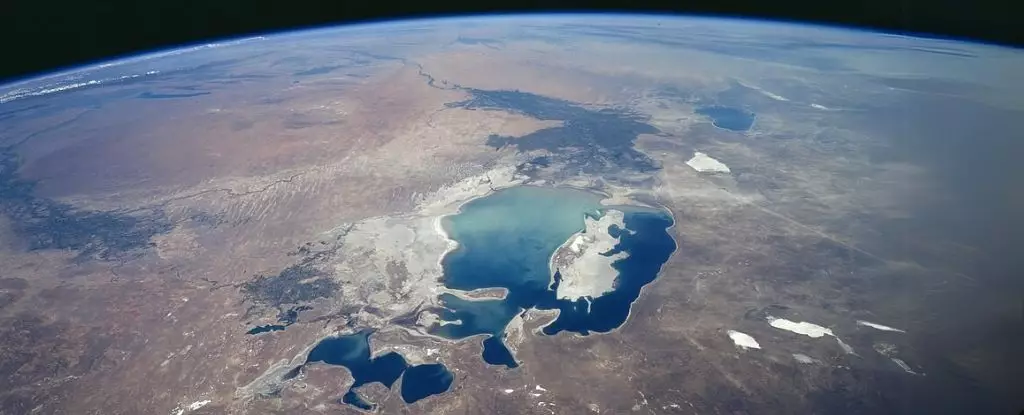Before the mid-20th century, the Aral Sea, once the fourth largest lake on the planet, spanned a mesmerizing 68,000 square kilometers (26,000 square miles) between Uzbekistan and Kazakhstan. This expansive body of water supported a thriving ecosystem and communities that relied upon its resources. However, by 2015, the glistening waters had largely vanished, leaving behind a desolate graveyard reminiscent of a lost paradise. Today, only a fraction of its original size remains—approximately 8,000 square kilometers—while the exposed seabed has transformed into the Aralkum Desert, a stark symbol of humanity’s environmental mismanagement.
The Human Factor: Irrigation Gone Awry
The seeds of this ecological tragedy were sown in the 1960s when the Soviet government prioritized extensive cotton farming over the natural flow of the Amu Darya and Syr Darya rivers. Redirecting these rivers to irrigate vast agricultural fields—over 7 million hectares (1.7 million acres) dedicated to cotton—was a decision motivated by economic gain rather than ecological sustainability. This massive irrigation effort dramatically decreased the Aral Sea’s volume, eventually splitting it into fragmented sections and connecting previously isolated islands. The ensuing ecological imbalance created a toxic cocktail of salinity in the remaining water, leaving the once-vibrant ecosystem in ruins.
As the Aral Sea dwindled, so did the health of the millions living in the surrounding regions. The dust from the Aralkum Desert, laden with harmful chemicals and salt, has led to a deterioration in air quality, affecting not just local residents but communities even 800 kilometers (500 miles) away. Exposure to this toxic dust has been linked to a surge in health problems—including respiratory issues, increased congenital defects in children, and chronic illnesses among adults. The disintegration of the traditional fishing industry further exacerbated the economic decline, leaving behind rusting fishing vessels as echoes of a once-thriving trade.
In light of the overwhelming challenges posed by the Aral Sea’s demise, local governments are making efforts to address the environmental crisis. Initiatives focused on planting native vegetation aim to combat the toxic dust inhalation and restore some semblance of ecological balance to the parched land. Local scientists are actively searching for resilient plant species that can thrive in the salty soil created by the lake’s desiccation. International organizations, including the European Union and USAID, have begun to offer their support for these reforestation efforts. However, the success of these initiatives remains uncertain, and the question of whether they will reverse the damage done is still open for debate.
A Global Warning
The tragedy of the Aral Sea serves as a cautionary tale that goes beyond its borders. The same reckless agricultural practices and water mismanagement that led to the lake’s demise can be seen in many parts of the world. Regions in Africa, the Middle East, Europe, Australia, and even areas of the United States are facing similar challenges, as lakes and other freshwater bodies shrink or dry up due to industrial agriculture and climate change. The Aral Sea’s fate is a profound warning against taking local ecosystems for granted and highlights the urgent need for a shift in global priorities regarding water conservation and environmental sustainability.
The story of the Aral Sea is a complex tapestry woven from human ambition, environmental neglect, and the undeniable consequences of our actions. As we face a growing water crisis globally, the need for responsible management of natural resources has never been more pressing. It is imperative that we learn from the past and adopt policies that prioritize sustainable water use and ecological health. The echoes of the Aral Sea’s desolation should resonate with all of us—a clarion call to safeguard our planet for future generations.


Leave a Reply